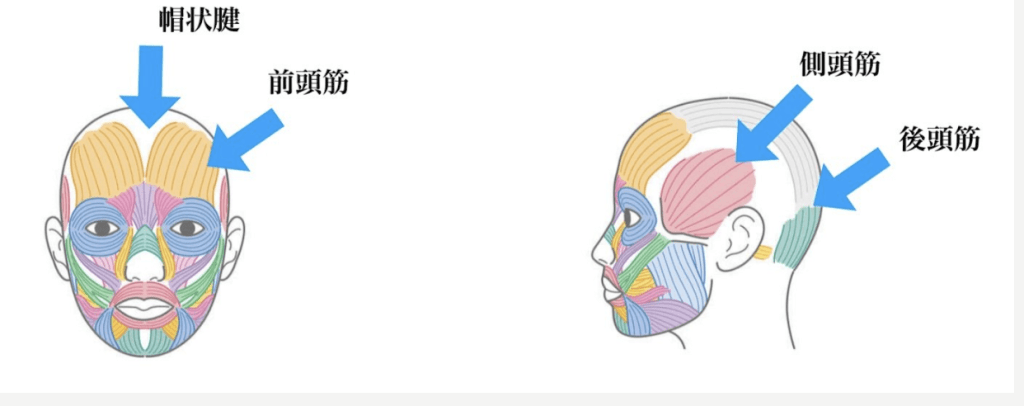What Is the Most Effective Approach for Treating a Tight Scalp?
。
Is Your Scalp Tight? Why Is a Tight Scalp a Problem?
Having a tight scalp isn’t just uncomfortable—it can impact the health of your hair. When the scalp becomes rigid, it restricts blood flow to the hair follicles, which means your hair isn’t receiving the essential nutrients it needs to grow strong and healthy. This can lead to thinning hair, excessive shedding, and a lack of volume, making it challenging to maintain a full and vibrant hairstyle.
Understanding Scalp Muscles
The scalp is connected by several muscles that play a role in maintaining its flexibility and circulation:
Frontalis Muscle: Located near the forehead, above the eyebrows, and extending to the top of the head.
Temporalis Muscle: Situated above the ears, on either side of the head.
Occipitalis Muscle: Found at the base of the skull in the back of the head

These muscles work together to maintain scalp mobility and circulation. However, at the very top of the head lies a unique area called the Galea Aponeurotica (or the “Scalp Tendon”), which lacks muscle tissue and doesn’t move naturally. This immobility makes it more prone to tension, causing poor blood flow in this region.。
Why Is Blood Circulation Important?
Just like muscles in other parts of the body, scalp muscles are responsible for promoting circulation. Without proper blood flow, the hair follicles don’t receive the oxygen and nutrients they need. As a result, this can lead to a variety of hair concerns, including thinning, weak roots, and even premature graying.
A tight scalp can also contribute to the problem of hair not achieving the desired volume, making it difficult to style. If the scalp remains tense, it can disrupt the hair’s natural growth cycle, resulting in limp and flat-looking hair.
The Key to Scalp Care: Gentle Stimulation
Because the Galea Aponeurotica area cannot move on its own, the solution lies in stimulating the surrounding muscles—the frontalis and occipitalis muscles—to keep the scalp flexible and the blood flow active. By regularly massaging these areas, we can loosen the scalp, improve circulation, and ultimately support healthier hair Healthy.
Daily Care for a Healthier Scalp
Achieving a healthier, more balanced scalp isn’t a quick fix, but with consistent care, the benefits will become noticeable. Here’s how you can start:
Proper Cleansing Routine: Gently cleanse your scalp with the right shampoo to remove impurities and buildup.
Self-Scalp Massage: Incorporate short scalp massages into your routine whenever you have a moment. This helps relieve tension and promotes better circulation.
Commitment and Consistency: Just like any other wellness habit, regular practice is key. With about 4 months of consistent care, you may start to notice a softer scalp, reduced hair fall, and an overall improvement in scalp and hair health.
Transform Your Hair with Proper Scalp Care
Healthy, radiant hair begins at the root—your scalp. When you prioritize scalp care, you unlock a range of powerful benefits:
- Balanced Scalp Health: Restore your scalp’s natural condition, reducing dryness, oiliness, and irritation.
- Thicker, Shinier Hair: Nourished hair follicles promote stronger, fuller, and more vibrant strands.
- Minimized Gray Appearance: Improved scalp circulation and nutrient absorption can support healthier pigment retention.
A Head Spa is more than just a treatment—it’s a long-term investment in your hair’s vitality.
By consistently caring for your scalp, you’ll not only see but feel the difference. Healthy, beautiful hair starts from within—book your head spa experience today and embrace lasting hair wellness.